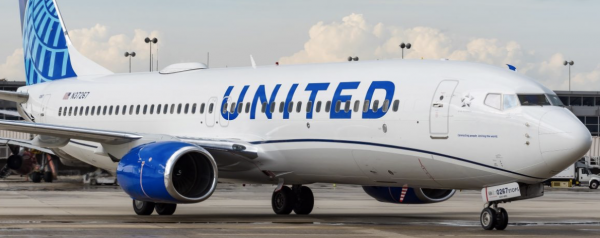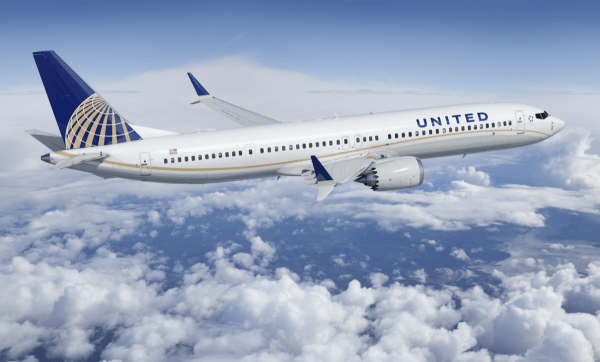
Let’s get straight to the point…some of the links on this site pay 1TattedPassport a referral bonus for anyone that is approved. For our complete advertising policy and details about our partners, please click HERE. Although using the links are completely optional, we are eternally grateful when you do.
A few days ago, I received an email from a 1TP subscriber that requested information to understanding United Airlines “award chart.” Yes, I placed award chart in quotes because it can be challenging to understand why your points are NOT as valuable as they used to be (at least with United), particularly if you were accustomed to a static award price.
I thought the information would make a great blog post because it not only explains United’s award chart but will also help others understand several other airlines.
The message read in part:
I’m not new to miles and points but your blog has opened my eyes to things I have overlooked in the past. I’m learning how to efficiently use my points and sometimes cringe at how many I redeemed on past flights knowing what I know now.
Anyway, I live in New York and generally use EWR as my home base. As you probably know, United is based here so UA is my go-to airline.
Lately, I’ve been trying to wrap my head around why the prices seem inflated and I’m paying more than I remember paying on past redemptions.
Recently, you wrote a blog highlighting UA routes for 5,000 miles but I always feel like I am paying more. I can’t say that I’ve paid 5,000 miles for any flight, EVER! Am I doing something wrong?
First, you’re not doing anything wrong. In fact, your observations are spot on. The award prices have increased. Let’s start with a little background…
UNITED AIRLINES DEVALUATION

In late 2019, United started down the path towards dynamic award pricing by removing its own award chart.
Well, several months ago, United changed (and devalued) their program. You probably didn’t notice initially because everyone was focused on the pandemic but I wrote about it HERE.
WHAT IS A POINTS DEVALUATION?
A points devaluation is, simply, when your points are worth more today than they are in the future.
For example, a few years ago, every airline published an award chart with static numbers that told you how many miles were required to get from Point A to Point B. Unfortunately, Delta, United, and American (aka big “US3”) have all switched to dynamic pricing and eliminated their published award charts. In other words, the airlines operate with a “what you see is what you get” model and the numbers are no longer static.
For context, let’s say that you were interested in flying one-way in economy from San Francisco (SFO) to Munich (MUC) redeeming United Airlines miles to fly on Lufthansa (a Star Alliance partner)…and yes, you can use miles from one airline to fly on a partner airline.
You search for award availability on United.com and find economy award space on June 29.

Historically, 30k has been the static price that United has charged to fly on Lufthansa. However, without a published award chart, the price is unpredictable and ever-changing.
For example, if you continue looking at your options on the same day, you may find this…

Yes, United Airlines is charging 70,000 miles (that’s an additional 40,000 miles (+ $35) extra) to fly IN ECONOMY on Lufthansa on the same day! ANDDDD there is a layover?? That makes no sense!
With dynamic pricing, the award could be 10k miles or it could be 110k miles. It simply depends on when you search for the ticket.
Not only did United remove their award chart for partners but they also increased award rates on (some) partner award redemptions.
For example, historically, a one-way Saver Award ticket from the U.S. to Japan on ANA – also a Star Alliance partner – cost 35,000 and 80,000 United miles in economy and business class, respectively.
However, it appears that United has applied a 10% increase on partner redemptions.

Again, the 10% increase is not applied across the board equally to all partners and I’m not seeing a pattern but it’s worth being aware of it.
I have synthesized a chart (below) to explain how much you SHOULD be paying with the new dynamic award chart.
| Destination (from the USA) | United Airlines | Partner Airlines |
| Mainland US /Canada | 12.5K Coach 35K Business | 14K Coach 27.5K Business |
| Alaska | 17.5K Coach 30K Business | 19.5K Coach 33K Business |
| Hawaii | 22.5K Coach 40K Business | 25K Coach 44K Business |
| Mexico | 17.5K Coach 30K Business | 19.5K Coach 33K Business |
| Central America | 17.5K Coach 30K Business | 19.5K Coach 33K Business |
| South America (Northern) | 20K Coach 35K Business | 22K Coach 38.5K Business |
| South America (Southern) | 30K Coach 60K Business | 33K Coach 66K Business |
| Europe | 30K Coach 60K Business | 33K Coach 77K Business 121K First |
| Africa | 40K Coach 70K Business | 44K Coach 88K Business 143K First |
| Middle East | 42.5K Coach 75K Business | 47K Coach 93.5K Business 154K First |
| North Asia | 35K Coach 70K Business | 38.5K Coach 88K Business 132K First |
| Central Asia | 42.5K Coach 75K Business | 47K Coach 93.5K Business 154K First |
| South Asia | 40K Coach 75K Business | 44K Coach 99K Business 154K First |
| Japan / Oceania | 35K Coach 70K Business | 38.5K Coach 88K Business 121K First |
| Australia / New Zealand | 40K Coach 80K Business | 44K Coach 99K Business 143K First |
Keep in mind that with dynamic pricing charts, United could place a specific route on “sale” and charge less (e.g. 5,000 miles) but this chart should give you a foundation for what the numbers should be.
Note: To determine if your destination is in a certain region, United lists the countries in every region on THIS PAGE.
It is also worth noting that United now charges a mileage close-in booking fee:
| United flights | Partner flights | |
| Close-in fee (within 7 days) | 2.5K – 3K miles | 1K – 3K miles |
| Close-in fee (between 8-21 days) | 2K – 2.5K miles | 1K – 3K miles |
In other words, if you book your award ticket for a departure less than 7 days away (or greater than 7 days but less than 21 days), they’ll charge you extra miles.
EARN AND BURN MANTRA
You may hear people say “earn and burn” as it relates to points meaning they redeem points as fast as they acquire them.
Personally, I think that’s a bit extreme but I also do not fall on the other end of the spectrum where I plan a trip 2 years from now. A lot of changes can take place in two years. If you wait too long you run the risk of devaluation.
FINAL STAMP
It was disappointing and unfortunate that United followed in the footsteps of Delta (as they always do), but this is also why it is important to accrue transferrable points (i.e. Chase, Amex, etc.).
United Airlines is a transfer partner of Chase but in the instance that United is charging an egregious amount for a redemption, you can transfer your points to another Star Alliance carrier loyalty program (i.e. Singapore Airlines) and still fly on that same United plane for less.
Again, if you (or anyone you know) have questions, do not hesitate to drop me a blog comment or email. Award travel is fun and can be even more rewarding when you know WHERE and HOW to look for rewards.
What’s your points strategy?
p.s. I just found some great redemptions if you’re interested…
A transcontinental for 6,500 miles…yes, please!

Florida is going through some COVID-19 challenges at the moment but, if they were not, it’s hard to beat this redemption…

